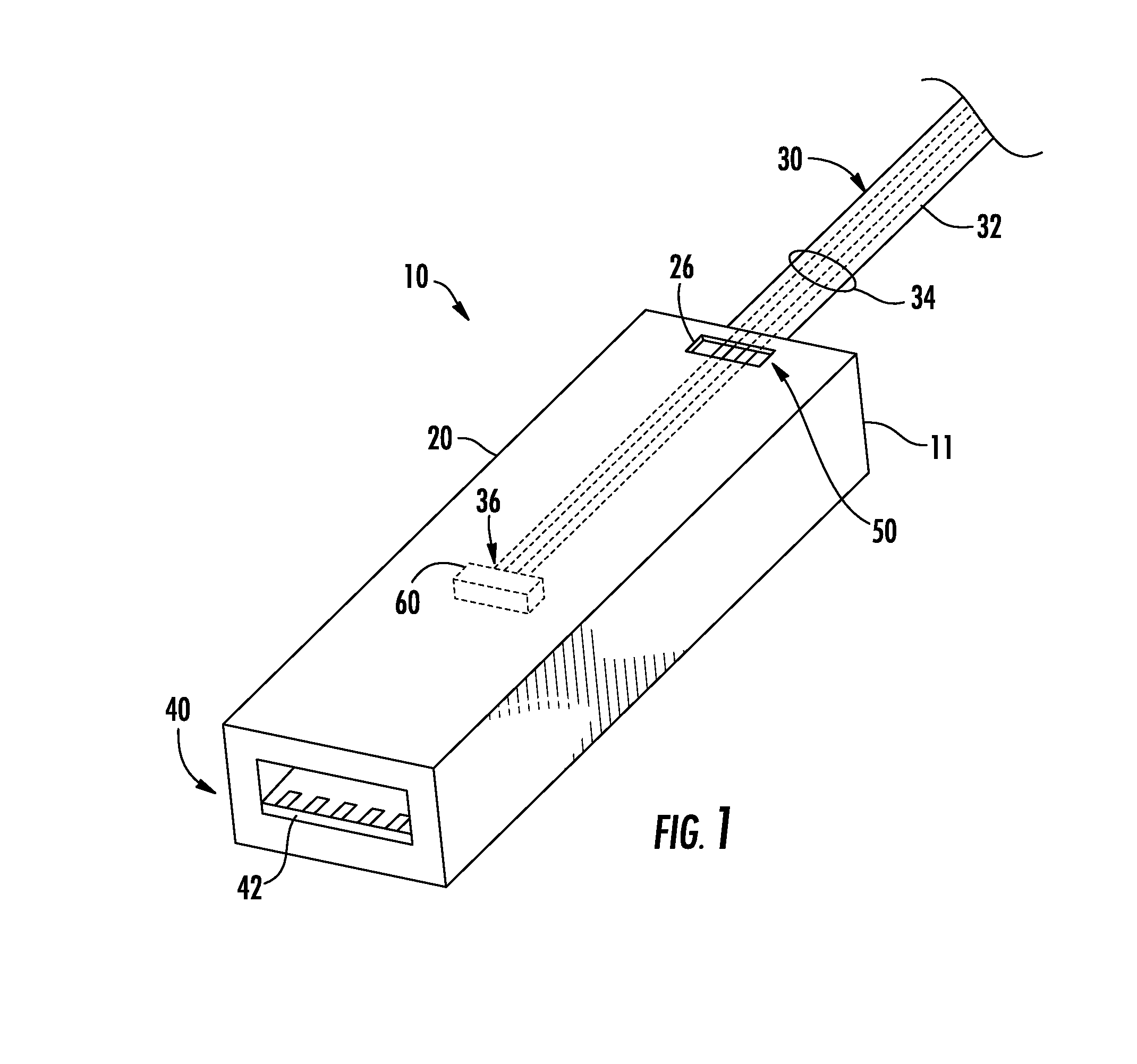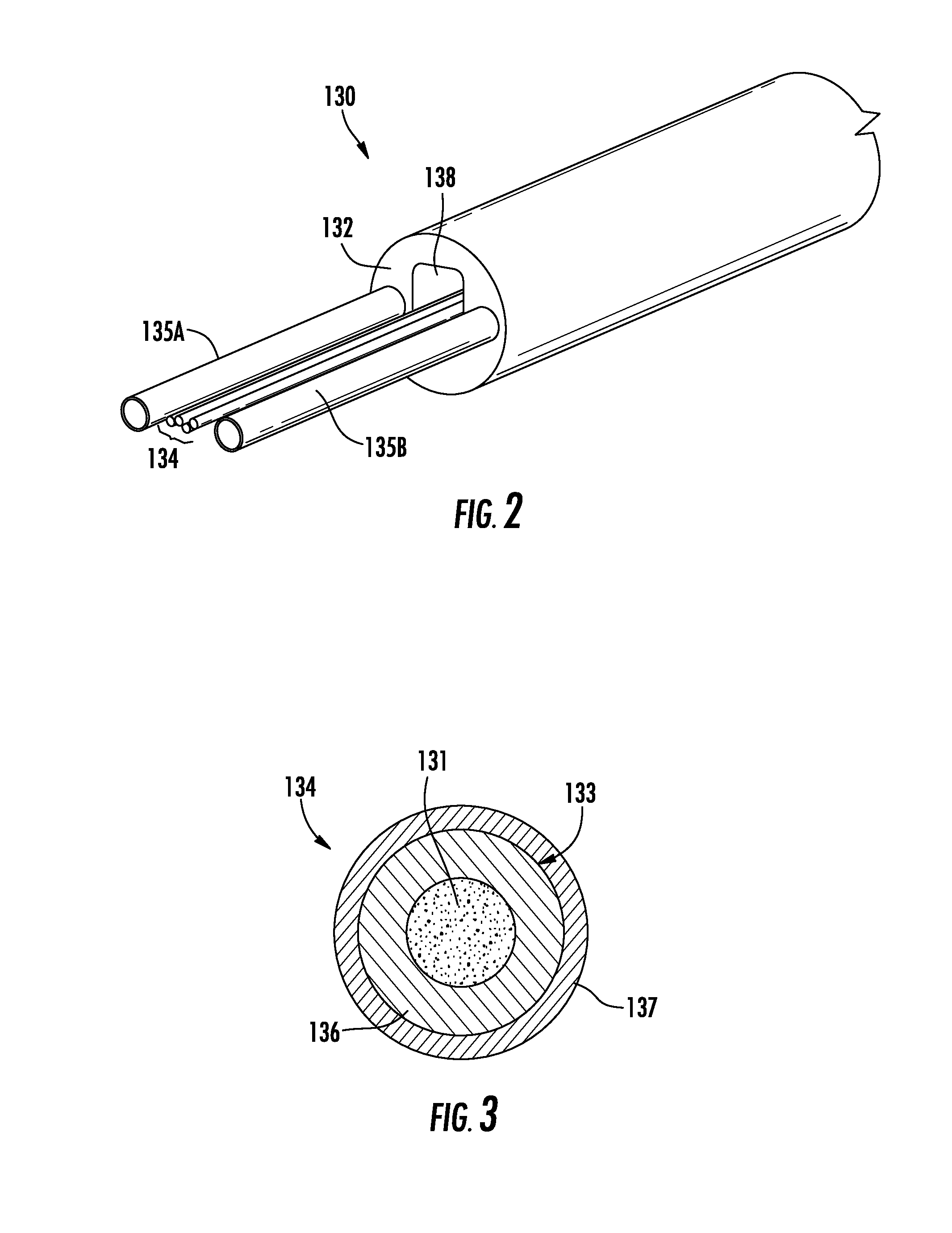Fiber optic connector assemblies having windowed optical fibers and methods thereof
a technology of fiber optic connectors and fiber optic connectors, which is applied in the direction of instruments, mechanical equipment, transportation and packaging, etc., can solve the problems of fatigue and damage of optical fibers, optical misalignment between optical fibers and optical components within the connector, and the difficulty of ggp fibers to be difficult to demark with strong retention in the connector body, so as to reduce the stress on optical fibers
- Summary
- Abstract
- Description
- Claims
- Application Information
AI Technical Summary
Benefits of technology
Problems solved by technology
Method used
Image
Examples
Embodiment Construction
[0029]Some aspects of the present disclosure are directed to fiber optic connectors of optical cable assemblies. As an example and not a limitation, embodiments described herein may be incorporated into active optical cables that convert electrical signals into optical signals for optical transmission over the optical cable, and optical signals into electrical signals for transmission to a coupled electronic device. In fiber optic connector applications, the connector housing acts as a demarcation body to which the plurality of optical fibers within an optical cable are secured. Embodiments described herein may provide increased mechanical robustness of fiber optic connectors by use of one or more windowed regions in each of the optical fibers that are coupled to the demarcation body. The inner glass region of the optical fibers is exposed at the windowed region such that the adhesive that secures the optical fibers to the demarcation body adheres to the glass region of the optical ...
PUM
| Property | Measurement | Unit |
|---|---|---|
| length | aaaaa | aaaaa |
| lengths | aaaaa | aaaaa |
| diameter | aaaaa | aaaaa |
Abstract
Description
Claims
Application Information
 Login to View More
Login to View More - R&D
- Intellectual Property
- Life Sciences
- Materials
- Tech Scout
- Unparalleled Data Quality
- Higher Quality Content
- 60% Fewer Hallucinations
Browse by: Latest US Patents, China's latest patents, Technical Efficacy Thesaurus, Application Domain, Technology Topic, Popular Technical Reports.
© 2025 PatSnap. All rights reserved.Legal|Privacy policy|Modern Slavery Act Transparency Statement|Sitemap|About US| Contact US: help@patsnap.com



